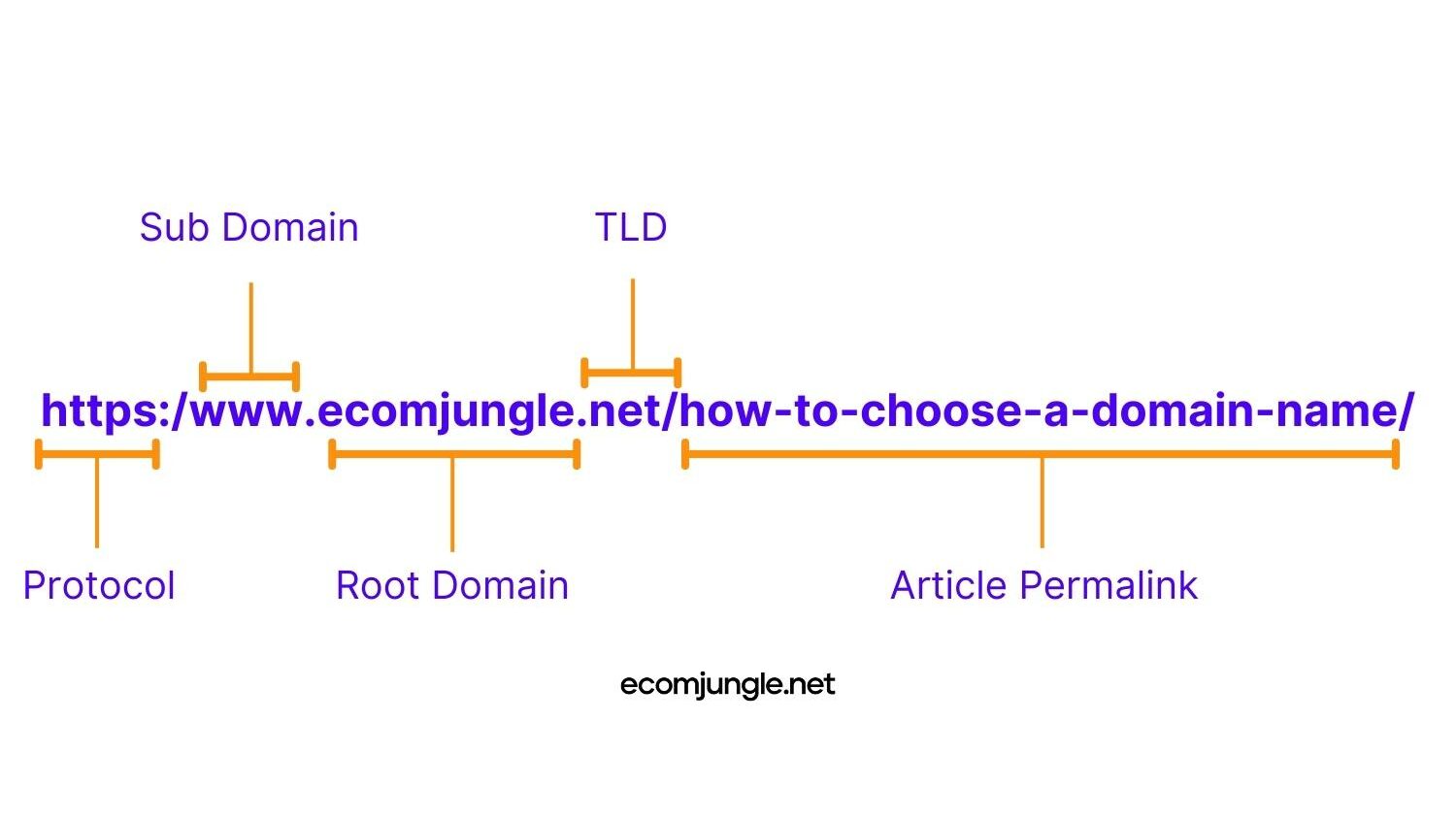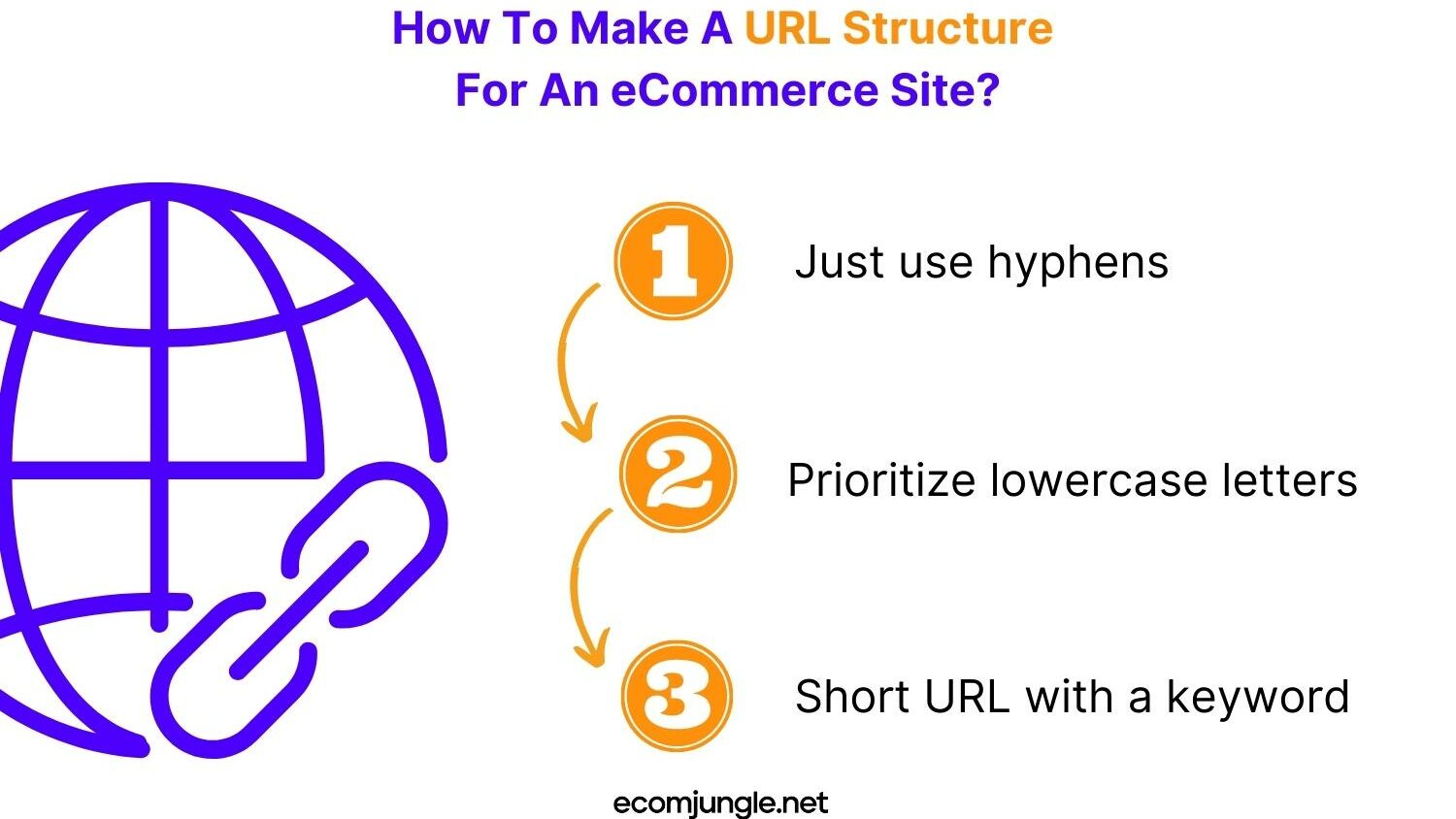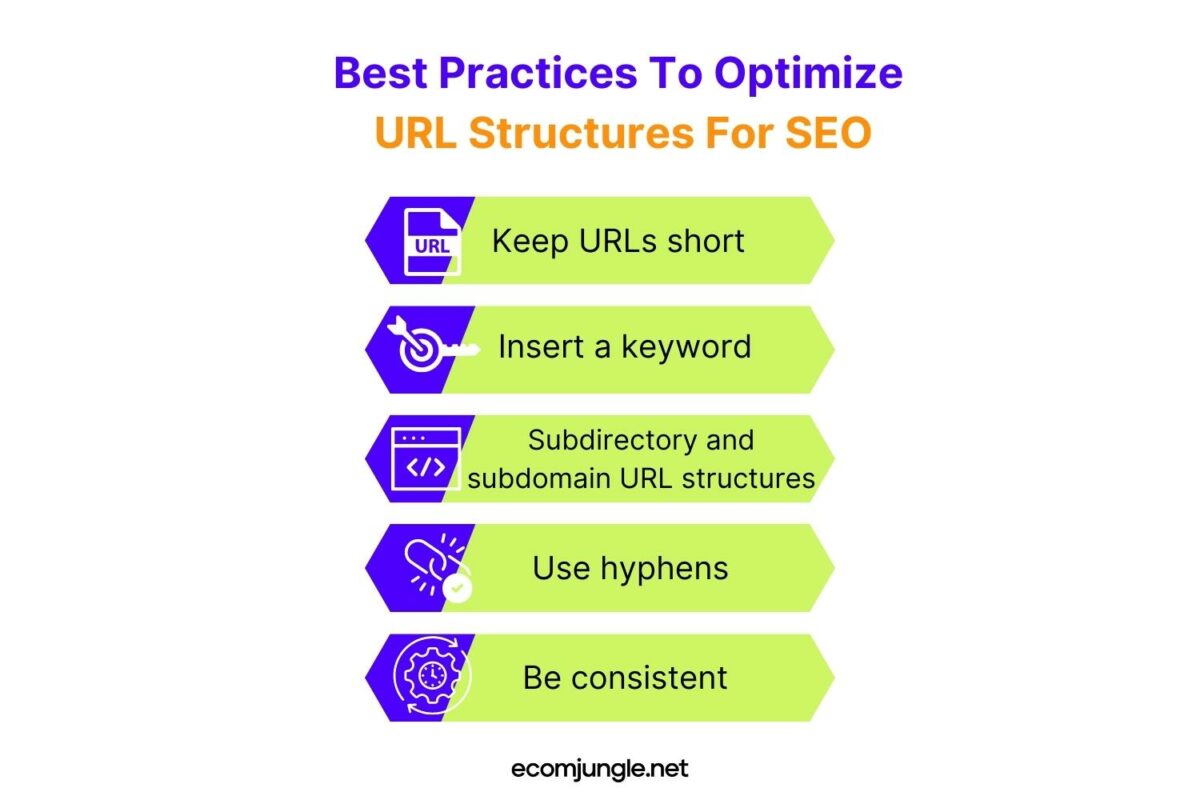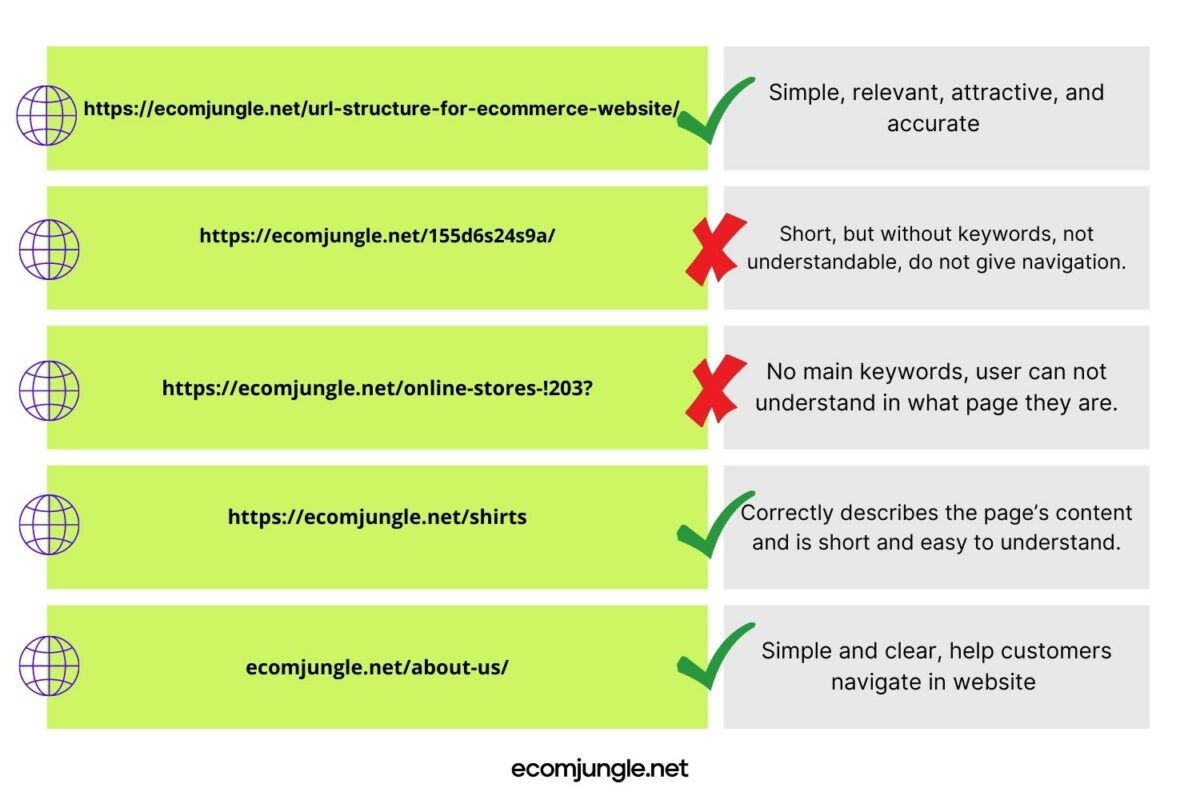One of the SEO points that are often ignored is the importance of using friendly URLs. However, its importance is critical both for search engines and to facilitate being remembered by users. And it even influences the reliability of these for web pages they browse.
Suppose you want to generate confidence in the user, invite them to click on your links, and not create doubts about where they will go. In that case, you must have clear and transparent URLs so that the user can have a sense of order, perceive the seriousness of the site, and feel safer in it.
For these and other reasons, using friendly URLs on your site is essential.
These simple tips will help you build and optimize the use of friendly URLs on your eCommerce websites. You must know and implement them in your site to take advantage of all the benefits of using them.
Are you going to miss it?

What Is An SEO-Friendly URL?
SEO-friendly URLs are short and rich in keywords, so they must be easy to understand for search engine bots and the website user and show the subject of the page just by reading its address. For a URL to be considered friendly, we must understand what this page is about by looking at it.
I’ll give you a bad example:
https://ecomstrive.com/155d6s24s9a/
Now for a good example:
https://ecomstrive.com/how-to-choose-a-domain-name/
There is no doubt that the second URL is friendly!
How To Make A URL Structure For An eCommerce Site?
If you want to make a URL more friendly, it is essential to follow some good practices.

- Just use hyphens: when separating words, for example, use a hyphen (-) and not other punctuation marks, such as periods or _, since Google understands the hyphen as a space, separating words properly.
- Prioritize lowercase letters: furthermore, you should prioritize lowercase letters to make them visually cleaner, and do not use accents or characters that are not universal, such as the eñe (ñ).
- Short URL with a keyword: for a URL structure to be friendly, it should also be as short as possible and always include the keyword closely related to that page. It helps SEO and user experience know if your page will address the topic they are looking for.
Read on to find out more practices on how to create SEO-friendly URLs!
Why Are Essential URL Structures For SEO?
Google likes simplicity, and the use of friendly URLs confirms this. So, in one of its algorithm changes, it has decided to pay attention to semantic URLs. Then, applying this structure, your website can rank better for Google search results; since dynamic URLs tend to cause a bad user experience.
For instance: https://ecomstrive.com/p/ecommerce-php-sample-code/issues/detail?id=22
Furthermore, Google considers overly complex URLs to be an SEO problem, as it believes that they can cause problems for crawlers by creating an unnecessarily large number of URLs pointing to identical or similar content on your site.
Pro Tip:
When you change your URLs to an existing website, you must be careful because you could lose the rankings you achieved with the old ones.
1. Rankings
Google considers them very important, and they name friendly URLs in their SEO guide for search engine beginners, which you can review by clicking on the link.
This way, search engines can crawl and index the content.
Pro Tip:
Search engines require different URLs for different content and their variations, for example, for pages in other languages or different regions.
2. Links
Link is an abbreviation for hyperlink, highlighted text that, when clicked, redirects the user to content located somewhere else. This way, hyperlinks can link two documents as different parts within the same document.
Inserting a link can add URLs to a web page, anchor text, video, or image. These links are vital when designing the linking architecture of the web. Currently, search engines require adding internal links and external links to websites to improve their positioning, as they provide them with more information about the page’s sector.
3. User-experience
Not surprisingly, user-friendly and well-designed links positively impact the user experience and can encourage people to enter an eCommerce website. So, a quality link informs search engine robots about the expected content of the landing page.
Therefore, by being precise and catchy with our friendly URL, we will attract the recipients’ attention and inspire their trust.
4. Conversion rate optimization (CRO)
SEO-friendly URLs have a positive impact on the website’s conversion rate. That’s why, optimized URLs will help make it easier for search engines and people to find and understand your content. Likewise, placing the appropriate keyword, studied for its search volume in your region, and relevant to the topic in the link contributes to improving traffic, SERP positions, and leads.
5. Helping to organize keywords
Counting the proper URL structure might assist you in matching the suitable keywords to a website’s particular section. It will facilitate you in creating a keyword list that you are willing to index to rank for, as well as create pages capable of driving more visitors to your site.
Best Practices To Optimize URL Structures For SEO
The simpler it is for users and search engines, the better it will be to increase your website’s reputation. Hence, paying attention to the construction of friendly URLs is vital.
So, the idea is that you can have URLs that are as clean as possible, easy to read, and that will stay in the memory of your users. Thus, the user will probably return to your page to continue reading, buying, etc., and your eCommerce store will rank better in search results.

1. Keep URLs short
Keeping links as simple, relevant, attractive, and accurate as possible ensures that users and search engine robots understand them correctly. Although, in theory, URLs can include various numbers and codes, it’s better to focus on keywords that our target audience knows well.
Bad URL: https://ecomstrive.com/making-an-seo-friendly-url-structure-for-ecommerce-website/
Good URL: https://ecomstrive.com/url-structure-for-ecommerce-website/
Do you have simple and transparent URLs?
2. Insert a keyword
After you do keyword research, taking a core keyword and including it in your URL is a good idea if they accurately describe the eCommerce’s content. Likewise, this technique is crucial to make the URL SEO-friendly and enhance the rank for those target keywords.
Moreover, when keywords are added to URLs, users are referred to the central issue that they will find on the page when they click.
For example: https://ecomstrive.com/keyword-research-for-ecommerce/
The “blog” directory contains the various sections and entries within the blog, so Google Search Console detects the URL as relating to a Blog.
3. Subdirectory and subdomain URL structures
A URL’s directory defines a web page’s structure and is divided into different subdirectories attached to the root domain.
Here is an example of a subfolder: ecomjungle.net/blog/
In the case of subdomains, these are a way of having related eCommerce websites, as an annex, to the root domain.
Here is an example of a subdomain: blog.ecomjungle.net
4. Use hyphens
As you may have seen in all the good examples, I have given so far, even if it is a compound keyword, you separate it into hyphens to improve its understanding.
In this case, bad practice is to use underscores, spaces, or special characters like, for example: https://ecomstrive.com/ecommerce/Conversion_rate#@!_optimization*/_!
Does it make you want to click? I’m sure it doesn’t!
5. Be consistent
One of the most important things you can do when creating SEO-friendly page URLs is to maintain consistency. Don’t experiment with different formats. Instead, use it as the basis for all page URLs on your website after choosing a layout.
Using a combination of different formats will make it challenging to navigate your site. And when you jump from one URL format to another, you may make typos in your links. So, for an SEO-friendly URL, you need to keep the same URL formatting.
The Right URL Structure For eCommerce Sites
Friendly URLs are tailored to meet the needs of target audiences and rank better in search engine results pages. Their elements, organized logically, have a positive impact on the visibility and positioning of the eCommerce website.
1. What are the right URLs for categories and subcategories?
Category URLs must be short and have the main keyword. Many CMSs automatically generate URLs based on the names of each category and subcategory. So, the structure of your URLs can, at a glance, help the user find their way around, knowing what page they are on and what its importance is within the hierarchy of your website.
For example:
Bad URL: https://ecomstrive.com/online-stores-!203?
Good URL: https://ecomstrive.com/ecommerce
Did you get it?
2. What URLs are suitable for product pages?
The best address URL that can be created for a product page is one that correctly describes the page’s content and is short and easy to understand.
It will benefit SEO and ensure that potential customers know what they are looking at and where the link will take them, increasing the number of product views and conversions.
For example:
Bad URL: https://ecomstrive.com/casual-clothing-for-adult-men
Good URL: https://ecomstrive.com/shirts
Pro Tip:
A suggestion I would like to give you is to try not to repeat the URLs of your eCommerce site structure. It is widespread when you offer similar products for sale where you tend to use the exact keywords.
3. URLs for filtered and sorted product lists
In the filtered and sorted product list URL, it is also necessary to include the keyword. It will increase the relevance of eCommerce in the sector and help deduce what the rest of your site is about. If you don’t know how to do keyword research for eCommerce, check my article in the link for more information.
As much as possible, it is vital to keep the URLs for filtered and sorted product lists and the whole of your eCommerce site structure as short as possible.
4. Proper URL structure for blog posts and blog categories
Every reputable eCommerce knows the importance of having a content marketing strategy through a blog. But what is the URL structure that each blog post should have?
As a general rule, after the domain name, place the post title as follows:
https://ecomstrive.com/how-to-do-ecommerce-keyword-research/
If you have several categories, after the domain name, place the name of the category and then the name of the entry, as you can see in the following example:
https://ecomstrive.com/seo/ecommerce-keyword-research/
In case the title is long, you can shorten the URL and keep only the most important words:
https://ecomstrive.com/keyword-research-for-ecommerce/
5. The URL structure for CMS pages and services
The URL structure for CMS (about, contacts, etc.) and services (if the eCommerce offers also) should be simple and clear to help your customers navigate your website and search engines to index the site properly.
For example: ecomjungle.net/about-us/
Some SEO tools can help you with this. Have you tried one?

Conclusion
Creating SEO-friendly URLs can complement your eCommerce website’s overall SEO strategy while driving better organic search rankings.
So that, following the principles related to friendly URLs described in this content will help you improve your website’s navigability, visibility, organic traffic, number of clicks, and rankings.
After all, SEO is all about people. Provide users with the necessary data and offer simple and transparent solutions, then you’ll see how quickly Google rewards this approach!
Start conquering the top search engine rankings!
Frequently Asked Questions
If you want to make a URL SEO-friendly, it must have some features such as:
Include keywords.
Have a short length.
Minimize dynamic URL strings.
Adjust the URL to the title of the content.
Use 301 redirects for URL changes.
Avoid whitespace.
Use as few folders as possible.
Do not use punctuation marks
Use hyphens to help search engines read your keywords.
URLs play an essential role in helping search engine crawlers like Googlebot find your website. URLs are also a crucial keyword location for SEO.
Hence, your website’s URL is one of the first elements that search engines and your prospects will come across. It is the gateway to your content, and, as such, it must be trustworthy and look trustworthy, hence the importance of structuring an SEO-friendly URL.
In your URLs, you have to add a keyword relevant to your niche as long as it accurately describes the content that will be found on the page.
Furthermore, you should use short, readable, and eye-catchy text in the URLs. As always, keep the reader in mind when creating your URLs. After all, your URLs should make sense to people: give them a good idea of which section of your website they have arrived at. You should also separate words with hyphens and eliminate filler words.